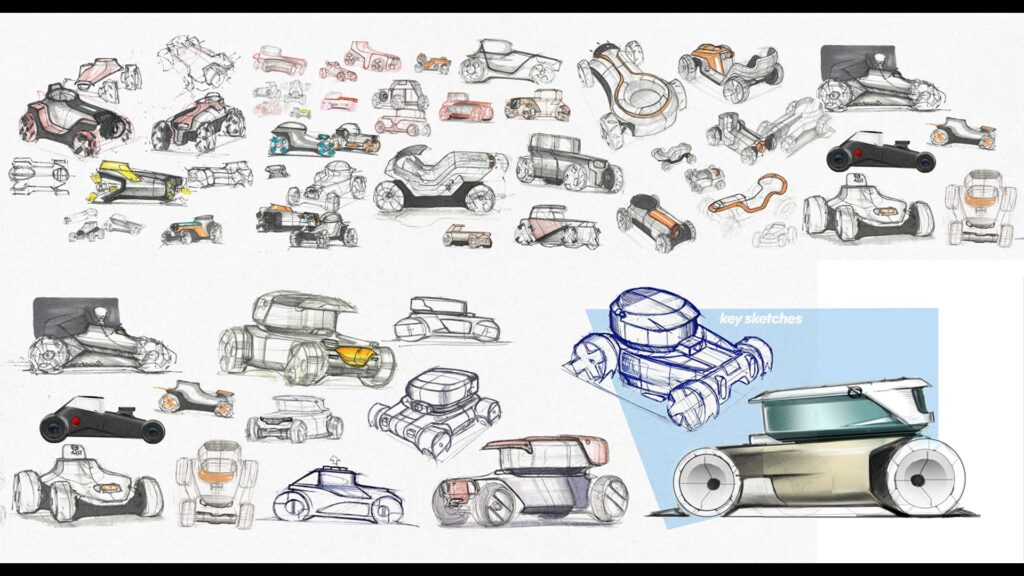
Sketch work, ISD Rubika Team 1 (inspired by Polaroid)
Last October, we revealed the first Autodesk Automotive Student Design Competition: The Power of Brand.
This unique competition asked students to choose a non-automotive brand and, drawing on the elements of that brand, create a vehicle inspired by it. That means designing and visualizing an original concept vehicle grounded in their chosen brand’s attributes.
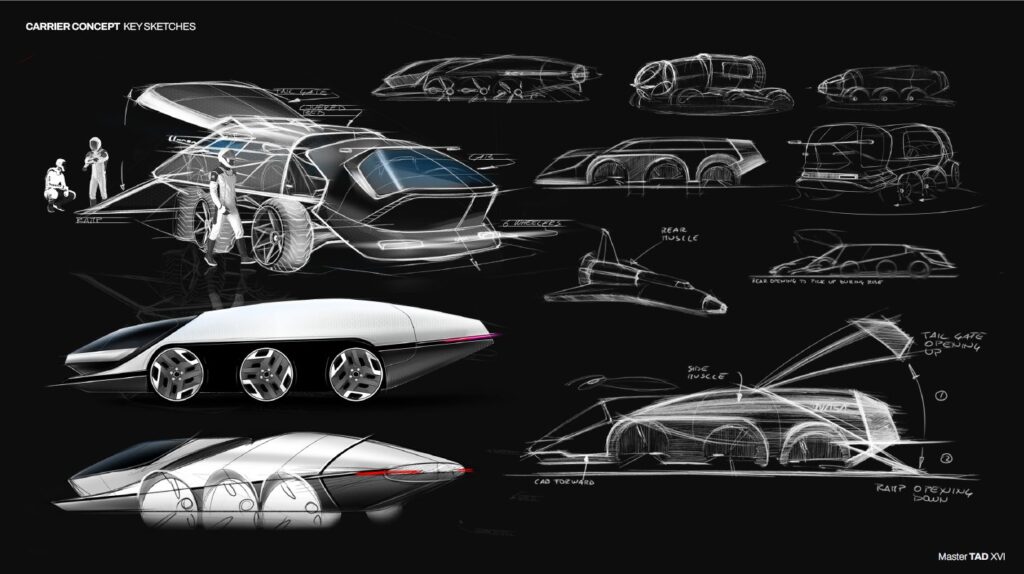
We wanted to share a bit more about the impetus for the competition, what judges were looking for, and how they arrived at the three finalists.
Why a student design competition?
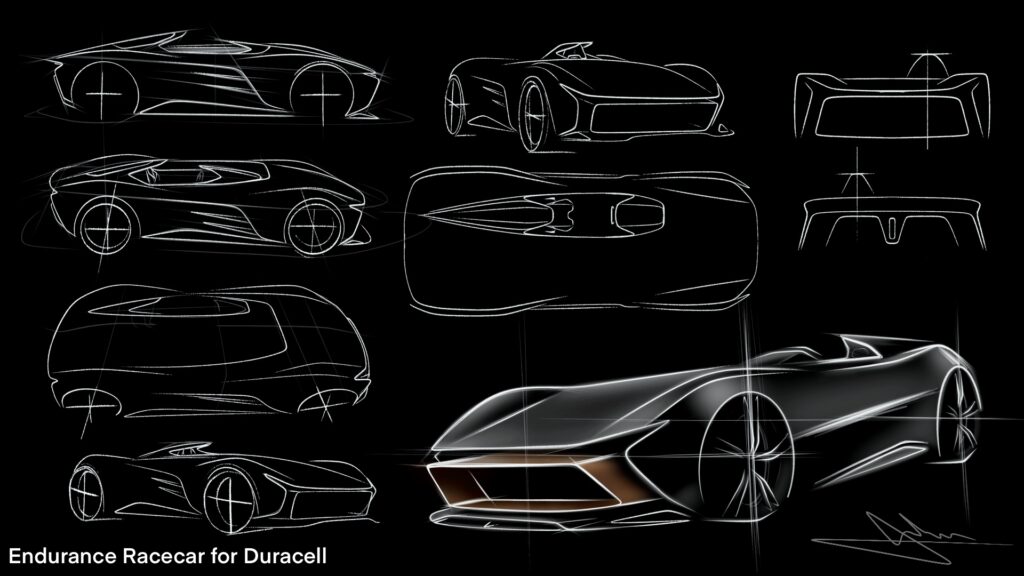
We know that students use whatever tools are close at hand or taught in their classes. If they’re lucky, that includes “best in class” software like Alias. But many don’t have access to this level of software until they’re in their first jobs as a designer, and that can make the learning curve extremely difficult.
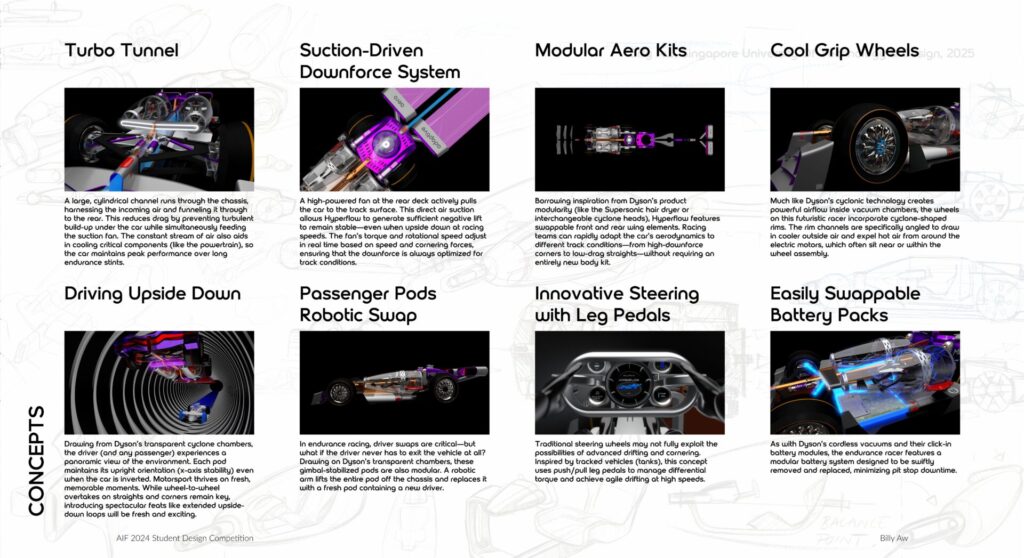
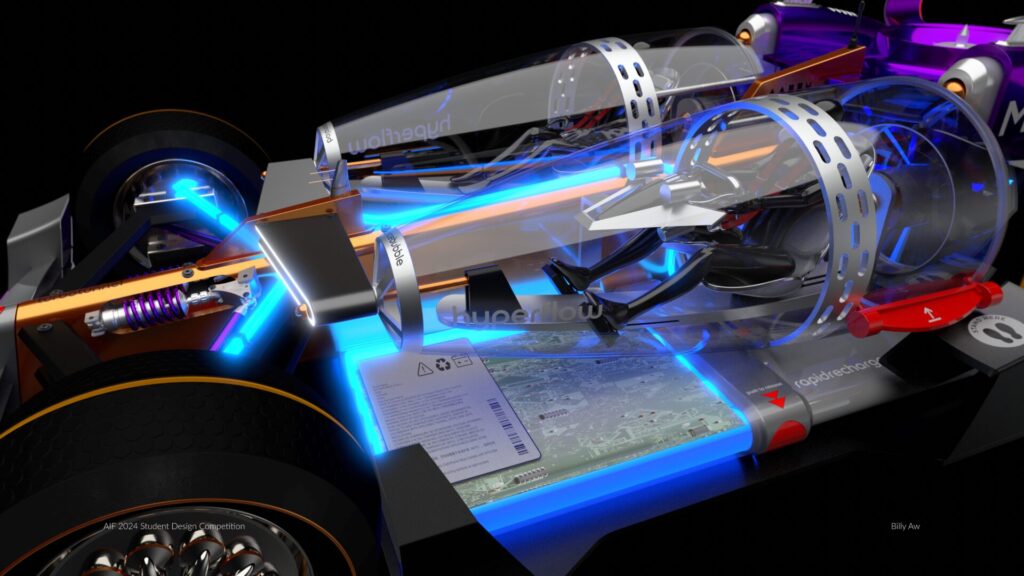
We wanted to give students a chance to sink their teeth into our tools and try their hands at real designs, just as they would need to out in the workforce.
But there’s also another element. Students don’t realize just how wide the opportunities are within automotive design. They know about designers specifically, but don’t realize that they can also work in visualization, Class A modeling, engineering, etc. Having design awareness – and knowing how to use tools like Alias and VRED – sets them up for success in those roles in a way that sets them apart from other designers.
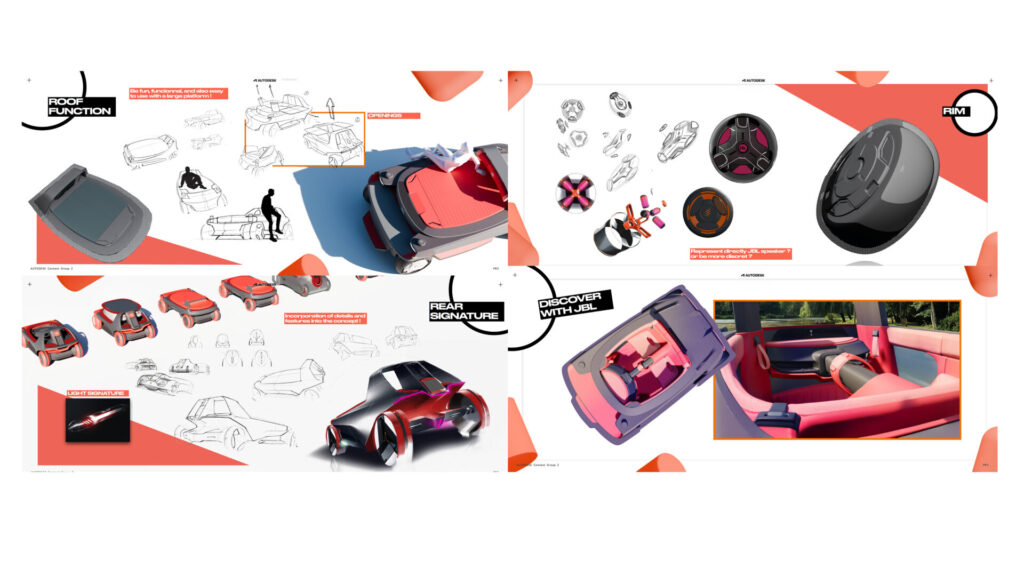
The Student Automotive Design Competition brief
Every project’s success begins with the brief. The competition included specific parameters, drawing from real-world experience to create the kind of project brief students might encounter in future jobs.
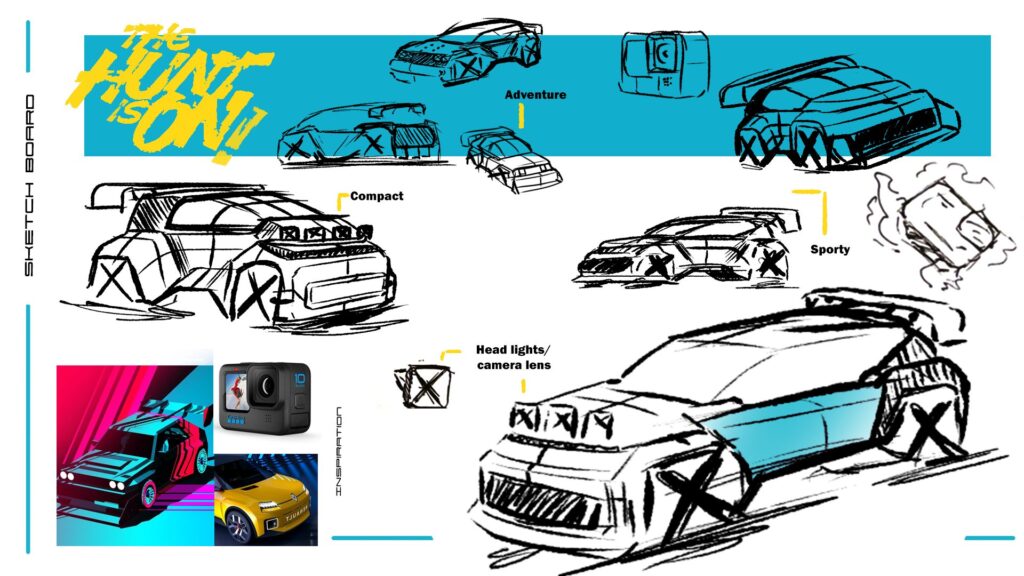
The focus: All entries had to show an original design developed, originated and built and visualized in Autodesk Alias & VRED. The subject matter had to be an automotive exterior.
Specifically, the judges were also looking for:
- 3D design / modeling / surfacing / texturing / visualization skills and creative vision
- Concept development and refinement
- Design storytelling
- Refinement and iteration of the design solution
- Final composition of the design visualization & animation
Design entries needed to include:
- Outline of the design
- Final Alias file(s)
- Final VRED scene
- Final selected renderings & animations
- And it was explained that “extra credit” would be given for good use of SubD, NURBS, and immersive reality-ready submissions
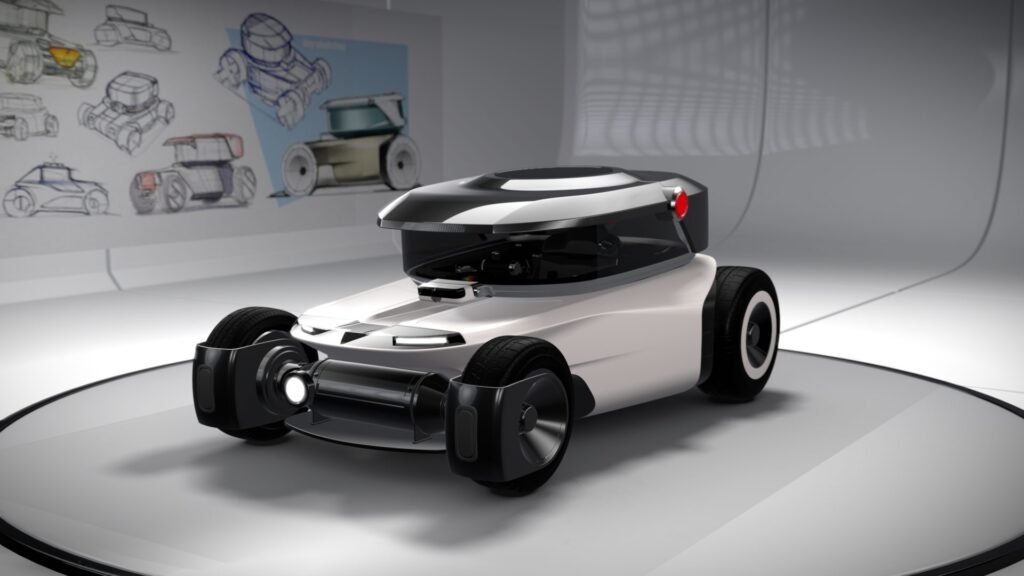
Reflections on the process
Our judges for this competition were Robin Oldroyd (Senior Sales Technical Specialist) Pierre-Paul Andriani (Design Studio Solution Specialist), Victor Perez (Automotive Sales Engineer & XR Sales Specialist), and Danny Tierney (Senior Automotive Design Solutions Specialist).
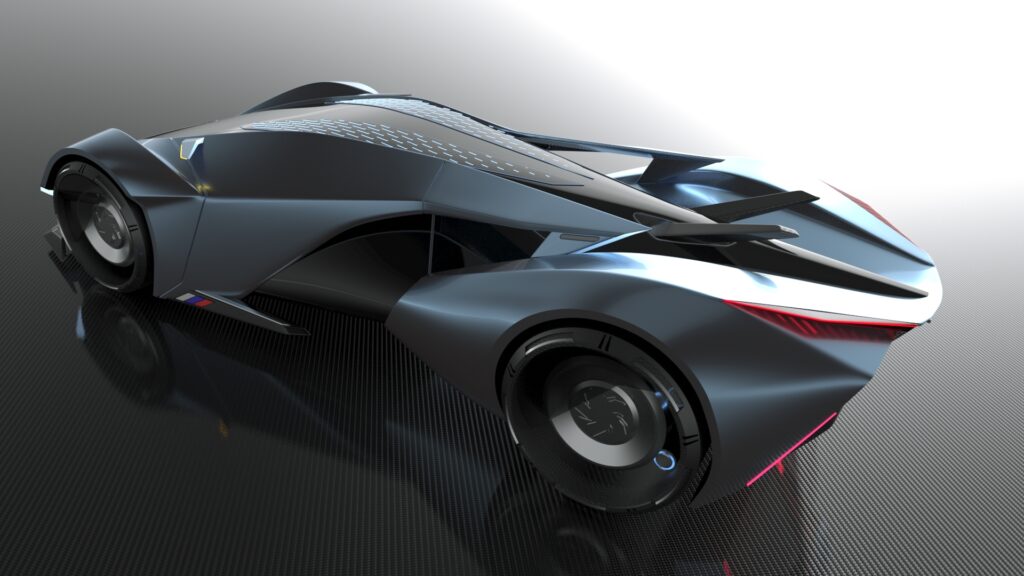
The process involved seven webinars on a key element of the design workflow: four for Alias, three for VRED, and 2 “Ask Us Anything.” The content covered such topics as Sub D modeling, NURBs, surfacing, visualization, animation, environments, lighting and materials.
Teams or individuals had to submit elements of the design for review at specific times, mimicking the kind of structure a designer would face in a design studio. There was a kick-off meeting, where teams introduced their chosen brand with a sense of why. At various points throughout the competition, teams shared their work-in progress with the judges before submitting their final work at the end of the competition.
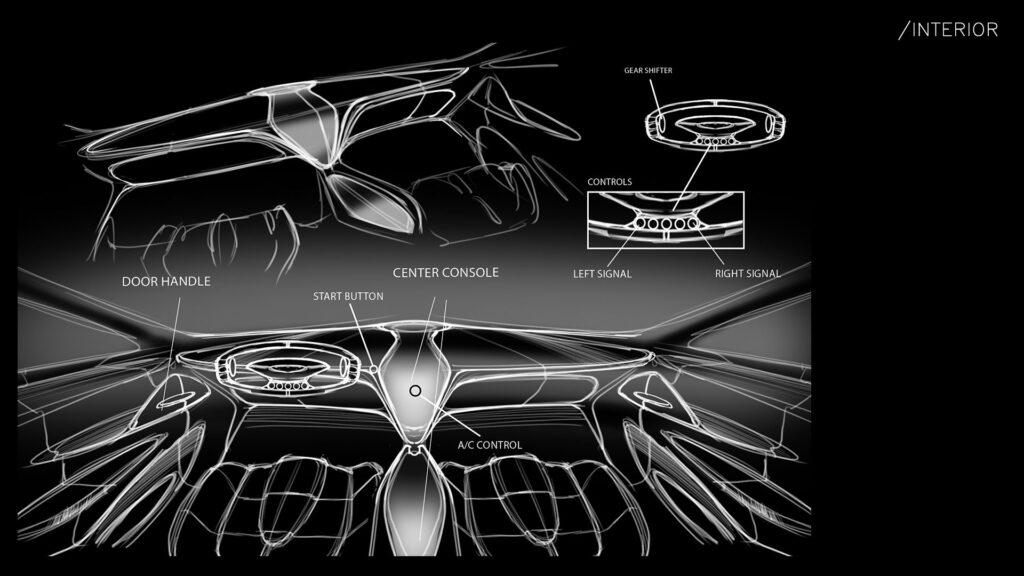
The judges realized, as the competition was in full swing, that they set a big challenge for the students. There were a few teams that dropped off during the competition, in part because it was harder than they’d anticipated to complete.
That said, design competitions are a valuable part of being in this world. Competitions give students the chance to create work for their portfolios, gets them out talking to people in the industry, and – if successful – gives them a chance to network with industry leaders.
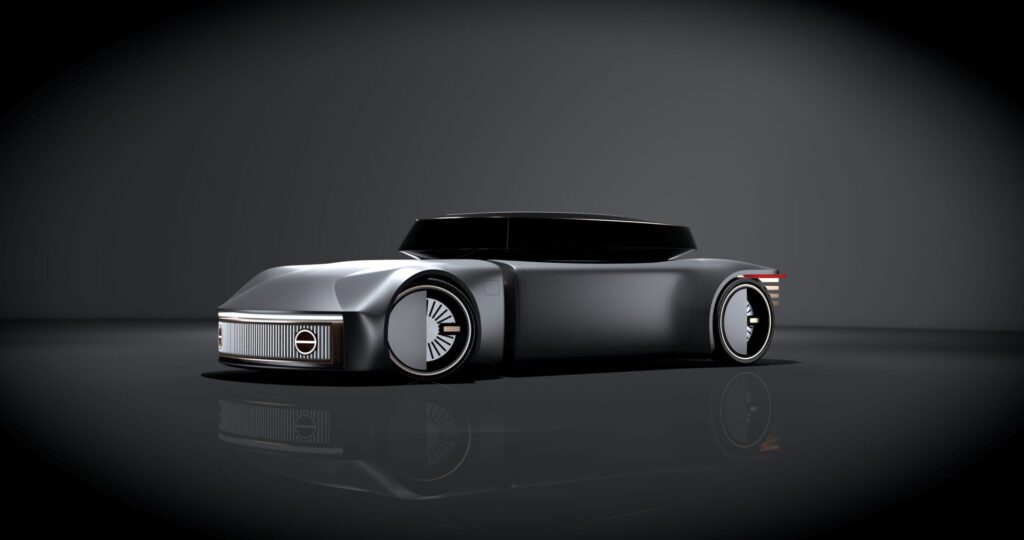
Judges also realized, when they were in the process of selecting their three finalists, how big a role storytelling played in a submission’s success. The technical elements needed to be there, and the visualizations had to look good. But all other things being equal, the story these young designers wanted to tell about their project was often a differentiator. Anyone who has vetted something – a job application, a portfolio, a competition submission – will tell you that the first and easiest filter is: did they fulfill the requirements? Judges often use the brief as a kind of initial checklist, against which they can make some quick and efficient decisions.
Reflections on the process
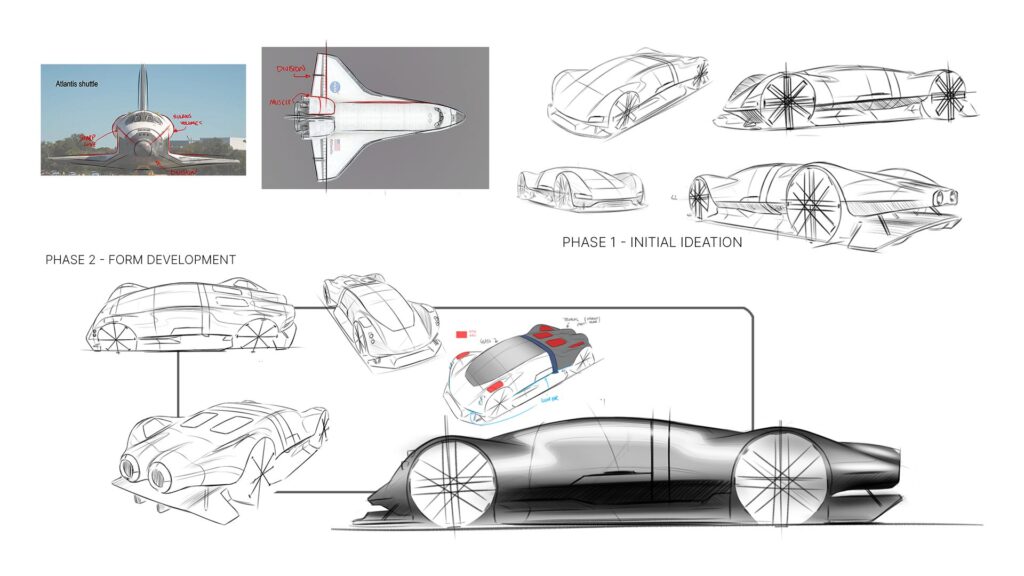
There were submissions that stood out for the judges in a number of ways, even if they didn’t make the final cut of finalists.
Some of the entries had done incredible research on the brands – but the final result didn’t realize their intent.
Some entries had incredible sketching – but their model looked like they ran out of time.
Some entries had really great animations – but the final design didn’t seem to be fully realized.
Some entries that almost made the final cut had really strong, detailed models – but the design and connection back to the brand just wasn’t there.
From 58 initial submissions, seven teams progressed through the competition. Judges chose their three finalists, and a decision was made at the last minute to include two honorable mentions.
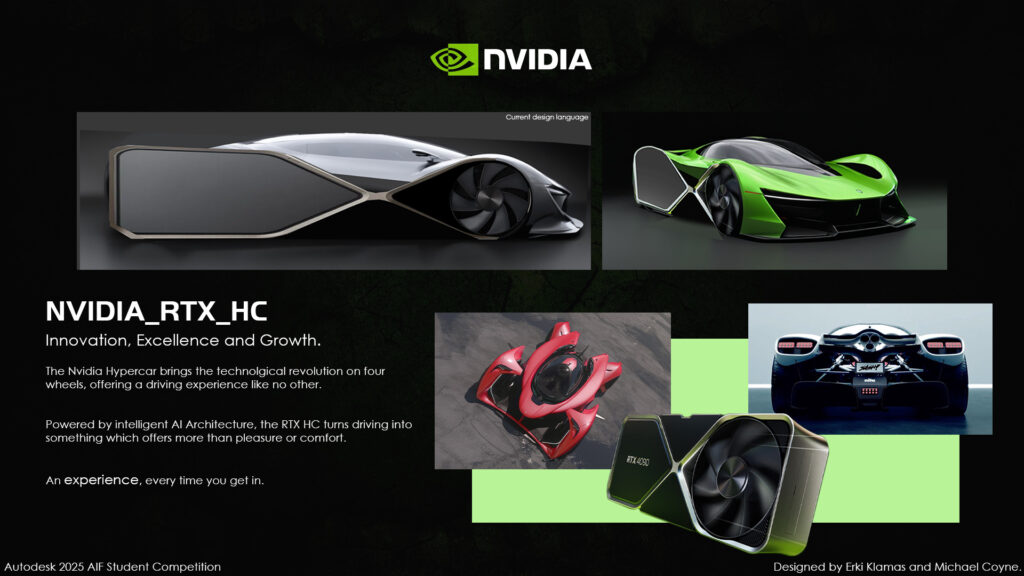
A key factor in those final decisions? A sense of seriousness, effort, and going the extra mile in their work. It might have been by implementing different functionalities to make the design nicer or more interactive. What often sets people apart from their peers in their work – at any stage of their career – is whether they have gone above and beyond the stated requirements. Has a team truly made it their own? Did they realize its fullest potential?

Finalist teams win entry to AIF 2025
The top three finalist teams, chosen by our judges, are invited to showcase their designs at the Automotive Innovation Forum (AIF) 2025 in Darmstadt, Germany, May 13 – 14, 2025.
These designs will be featured as part of the exhibition area at AIF. The winner will be announced during AIF on the main stage.
Why is this a big deal? AIF is the premier automotive event hosted by Autodesk with attendees from Automotive Design Studios around the globe.
The competition presents a unique opportunity for the winning teams to network with designers and leaders at major automotive companies (think: Porsche, Rivian, Ford, Italdesign, Toyota, and more) from around the world.
Unfamiliar with AIF? Check out some of our AIF 2024 here:
What’s next
Our three finalists were notified on March 17, 2025 – and sent their official invitation to join us at AIF in Darmstadt.
The winner of the Autodesk Student Automotive Design Competition will be announced on the first morning of AIF, May 14.
We’ll have more content on our finalists over the coming weeks, as well as a feature on the winner after AIF in May.
See more student design competitions
Autodesk has been proud to sponsor previous design competitions along with other organizations. Check out our piece on the APMA’s Project Arrow competition, our feature on the Domeble-Symetri Student Awards, and an overview of the student shows that Car Design News keeps an eye on, like the Coventry University’s Automotive and Transportation Design Show and the Royal College of Art’s post-graduate show – to name only a few.
Stay tuned for more customer spotlights, industry stories, and product updates.
You can also check out our Autodesk Automotive on LinkedIn, subscribe to our Alias and VRED YouTube channels, and follow us on Facebook.

Sharpen Your Skills
Alias and VRED Learning Editions are free for non-commercial use. Learn more and start your journey today.